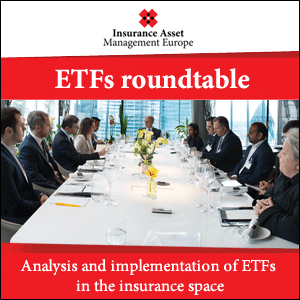
LATEST NEWS
- Extreme scenario could cause life insurers to liquidate investments reaching $1trn - IMF
- Top 500 managers see assets hit record $119.5trn
- Generali to announce ‘very ambitious’ new 3-year strategic plan
- Sumitomo Life to outsource portion of investment assets
- NAIC unconcerned about Evergrande’s default risk given US insurers’ ‘minimal exposure’ to land development companies
NAIC unconcerned about Evergrande’s default risk given US insurers’ ‘minimal exposure’ to land development companies

Written by Adam Cadle
25/10/2021
The National Association of Insurance Commissioners (NAIC) is not concerned about China Evergrande (Evergrande) being on the brink of default, given the US insurance industry’s “minimal” exposure to land development companies in the People’s Republic of China.
Evergrande is on the brink of default, missing an $83.5m interest payment due on some of its dollar-denominated bonds on 23 September. It has an additional 30 days to meet the obligation without triggering a default. With the COVID-19 pandemic negatively affecting property sales in China, Evergrande is experiencing a cash shortage amid a heavy debt burden of approximately $88bn in dollar equivalent outstanding debt at the end of June 2021. Given its broad reach as one of the largest developers in China, many investors are concerned Evergrande’s challenges could spill over to other PRC real-estate developers and negatively affect investor confidence globally.
According to the NAIC, US insurers’ total exposure to China real estate was a minimal $77.3m in total bonds and stocks at year-end 2020. About 67%, or $52.1m, was in bonds, with the remaining $25.2m in stocks. The largest bond exposure, representing about half of the industry’s Chinese real estate-related bond exposure, was with Longfor Group Holdings Ltd., whose corporate bond ratings were investment grade, or BBB/Baa2/BBB by S&P Global (S&P), Moody’s Investors Service (Moody’s), and Fitch Ratings (Fitch), respectively. S&P and Moody’s currently have a stable outlook, while Fitch has a positive outlook on the aforementioned ratings.
About 80% of the China real estate bond exposure was with large insurers, or those with more than $10bn assets under management, and life companies accounted for 71% of the total bond exposure. The largest stock exposure was Nam Tai Property Inc., representing 77% of the industry’s total Chinese real estate-related stock exposure, at $19.5m. Stock exposure was predominantly with property/casualty (P/C) companies, and half was with small companies, or those with less than $500m assets under management.
“Due in part to the small overall exposure, Chinese real estate bonds and stocks do not raise concern regarding credit risk among US insurer portfolios,” the NAIC said. “Notwithstanding, on an individual portfolio basis, exposure should be monitored as a percentage of total capital and surplus.”










